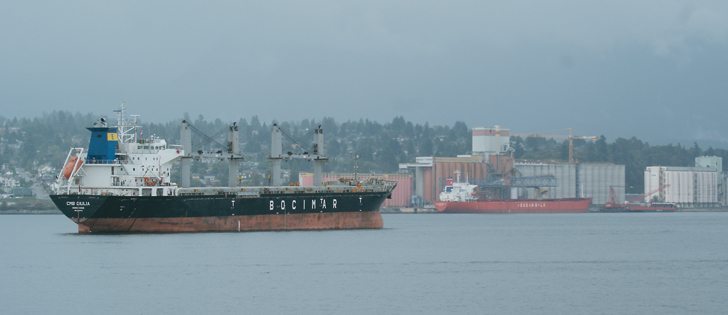A backlog of ships waiting for deliveries in Vancouver will have the grain sector on the hook for demurrage penalties
Western Canadian farmers who paid record-setting demurrage charges in the 2013-14 crop year could be facing another significant expense in 2014-15.
According to figures published by Canada’s Grain Monitoring Program (GMP), the number of ocean vessels waiting to be loaded with grain at the Port of Vancouver in late April stood at 24.
That’s at least double the historical average for that time of year, according to the GMP.
The April 20 vessel lineup in Vancouver included seven ships loading or partially loaded and 17 ships waiting for grain. The historical average for late April is 8 to 12 ships.
Read Also

Flax sector sees omega-3 opportunity
SASKATOON — A global shortage of omega-3 oils could be an opportunity for the flax sector, says an industry official….
Mark Hemmes, a grain transportation expert whose company collects GMP data, says the reasons for long vessel lineups at Vancouver include cheap ocean freight and lack of logistical coordination.
“The No. 1 reason is that they don’t have the right grain arriving at Vancouver in a sequence that matches the arrival of vessels,” Hemmes said.
“But you also have to (consider) … that ocean freight right now is at record low levels,” he added.
“If you took a 10-year average on what a Panamax freighter should go for on a daily basis, it would probably run somewhere between $20,000 and $30,000 a day.”
“Right now, Panamax vessels are at around $4,900 to $5,500 a day … It’s dirt cheap.”
Inexpensive ocean freight rates result in lower daily demurrage charges. They can also result in longer wait times because the monetary penalties associated with leaving a ship at anchor for a few extra days are relatively small.
Nonetheless, the unusually large vessel lineups at Vancouver suggest that persistent logistical problems need to be addressed.
“When you’ve got such cheap freight, the discipline to manage it is probably not as high as it would be at normal levels,” Hemmes said.
“Grain companies don’t mind having to pay some demurrage because you always want to run your supply chain tight, but this is out of hand.”
In addition to long vessel lineups, vessel wait times in port have also been increasing steadily, according to GMP statistics.
In the 2013-14 crop year, grain ships dispatched from the Port of Vancouver spent an average of 18.8 days in port, up from 15 days in 2012-13. This year, in February and March, they averaged 17 days.
In the 10 years preceding the elimination of single-desk grain marketing, the average time in port was less than eight days.
Hemmes said grain companies have been working with railways to improve co-ordination of grain deliveries, but the task is complex and results have been limited.
“If you went back to the first 10 years of the grain monitoring program, average vessel times in port at Vancouver were around eight days. Now we’re seeing an average of 18 days, 17 days …” he said.
“Those (wait times) are what chalk up big bills.”
In the 2013-14 crop year, annual net demurrage charges were calculated at more than $54 million, including nearly $42 million at Pacific port locations and more than $12 million at Thunder Bay, Churchill and the St. Lawrence Seaway.
That was easily the largest demurrage expense incurred by the Western Canadian grain industry in the past 10 years.
Contact brian.cross@producer.com
















